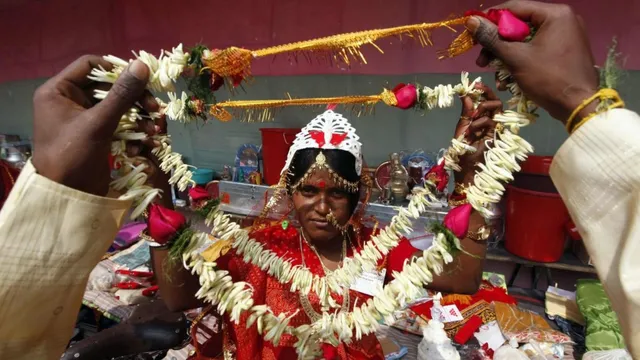- By Supratik Das
- Tue, 26 Aug 2025 02:05 PM (IST)
- Source:JND
Dowry deaths worldwide: The recent dowry death of 28-year-old Nikki Bhati in Greater Noida, whose in-laws allegedly set her on fire, has again shed light on how the age-old tradition of dowry is still a worldwide phenomenon, and not merely an Indian one. Though widely illegal, dowry continues in South Asia, the Middle East, Africa, and even among immigrant groups in the West, where it is often disguised as "cultural gifts.
India recorded 6,516 dowry deaths under Section 304B of the Indian Penal Code, according to National Crime Records Bureau (NCRB) data for 2022. This number is more than 25 times higher than female murders following rape or gangrape. Additionally, 13,641 cases were reported under the Dowry Prohibition Act of 1961. This number likely only reflects a fraction of the harassment women endure. With over 60,000 dowry cases pending in Indian courts, poor enforcement, social stigma, and prolonged trials hinder justice. India is not alone in facing this issue. Similar practices known as jahez in Pakistan, joutuk in Bangladesh, and lobola in some parts of Africa continue to affect millions of women worldwide.
The Epicentre Of Dowry Violence
South Asia continues to be the most deeply entrenched region that has been battered by dowry violence.
• Pakistan: Over 95 per cent of marriages entail dowry, in the face of the Dowry and Marriage Gifts (Restriction) Act (1976). Death and harassment complaints are frequent, but the police usually decline to register the cases.
• Bangladesh: Joutuk (dowry) has taken the place of the traditional bride price. Violence is so common that the Nari O Shishu Nirjatan Damon Ain (2000) was created to tackle dowry-related abuse.
• Nepal: An anti-dowry law of 2009 prohibits the practice, but in the Terai, dowry continues to be a status symbol, resulting in harassment and violence.
In Muslim-majority countries, the Islamic institution of mahr (compulsory gift from the groom to the bride) exists side by side with dowry-like practices:
• Iran: The bride's family gives a jahiziyeh, furniture, domestic items, and money, in addition to the groom's mahr. Conflicts tend to delay marriages or result in abuse.
• Egypt: Years of planning go into a gehaz, which is on display before the wedding. Not meeting expectations can result in stigma and family feud.
• Morocco: Shura, or dowry, is a transfer of wealth from the bride's family. This practice often leads to conflict and can result in death.
In Sub-Saharan Africa, customs such as South Africa's lobola were previously symbolic, acknowledging women's roles in households. Lobola, previously remitted in cattle, has evolved into cash payments or the transfer of property. Although meant as a bride price to the bride's family, activists caution that its commercialisation threatens to devolve into exploitation, akin to dowry's coercive elements in Asia.
In each of these nations, legislation is in place but entrenched social norms render enforcement ineffective, exposing women to abuse within the system. While presented as gifts, these practices themselves tend to reflect the same pressures and economic strain observed in South Asia, but on women.
Dowry Abuse Within Immigrant Populations
Though dowry is not a normative practice within Western society, instances have emerged within immigrant populations.
• United Kingdom: There is no specific dowry law. However, cases of dowry harassment are handled under laws related to financial exploitation and domestic abuse. Campaigners continue to push for the clear recognition of dowry-related abuse.
• Australia: Reforms were instituted following a series of dowry violence cases for South Asian migrants. The state of Victoria reformed its Family Violence Protection Act in 2018 to include dowry demands as an act of economic abuse.
• Greece: The practice of dowry was abolished in 1983 due to changes in family law.
These cases show that even in places where dowry has officially ended, its effects still remain in migrant communities as part of cultural preservation.
Therefore, dowry is not just an Indian problem but a transnational one with roots in patriarchy and gender disparity. While India's numbers are staggering, the root issue of considering women as economic burdens remains on the other side of the world, too. Until laws are strengthened, social norms questioned, and enforcement is made prompt, dowry will continue to be one of the most normalised illegal practices across the globe, from Delhi to Dhaka, Cairo to Casablanca, and London to Melbourne.

